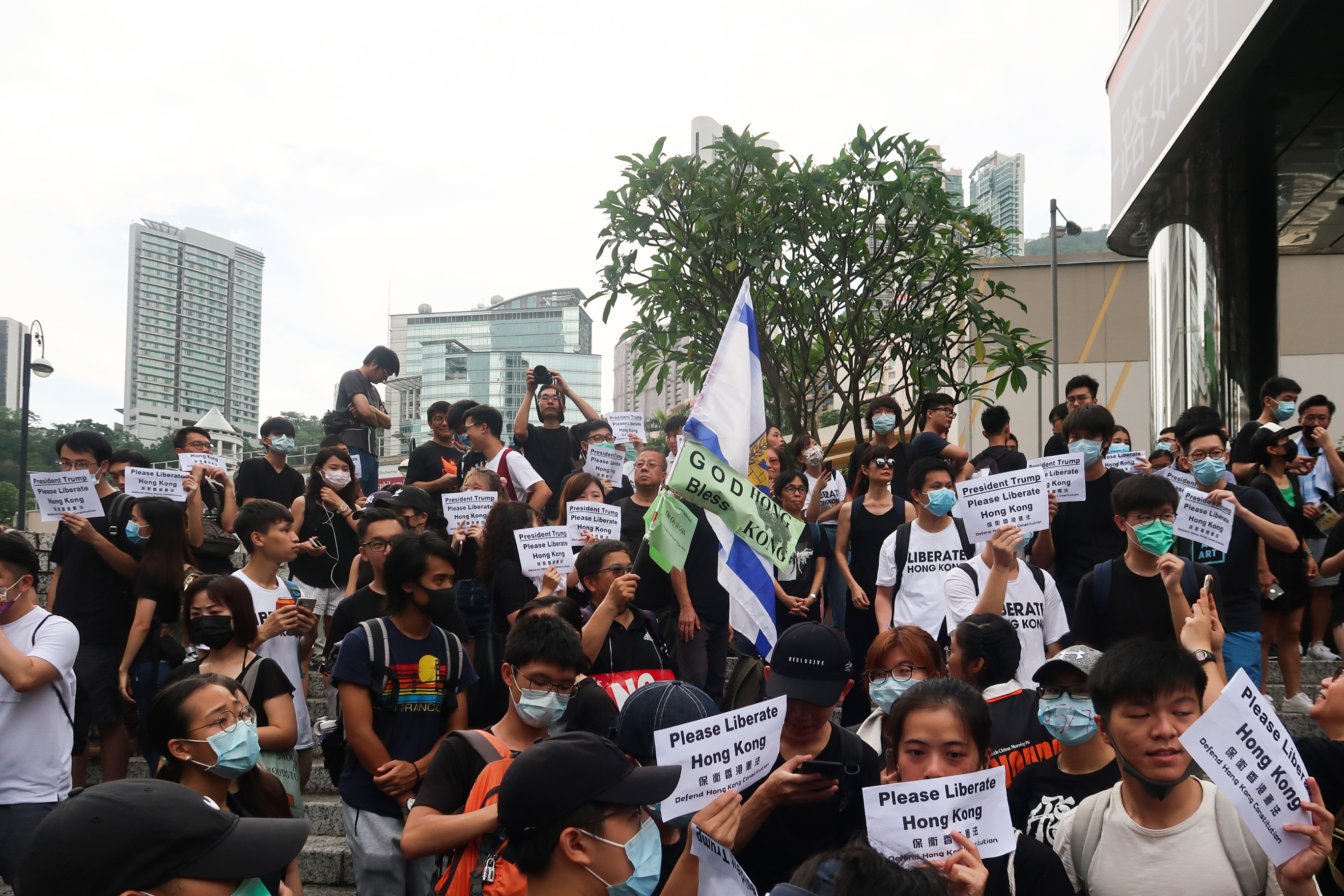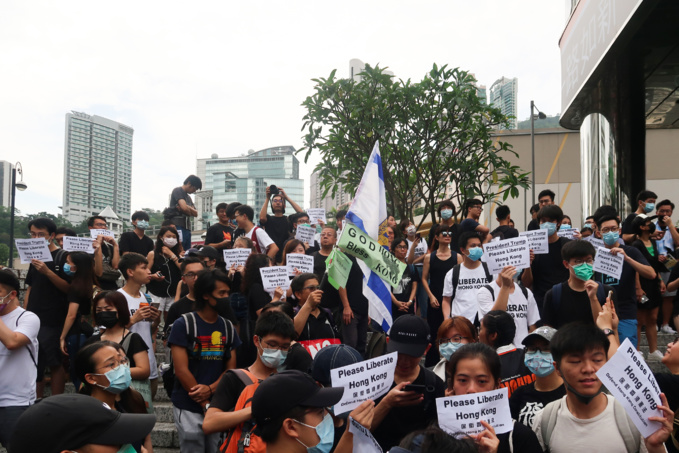The rage and readiness for vandalism of the protesters who crushed the Hong Kong parliament on the evening of July 1 shocked even their fellows. One of the opposition Hong Kong deputies got down on the knees before the mob of the rioters, imploring them not to break the glass doors of the parliament. However, he was pushed away and called "useless." Another opposition parliamentarian tried to block the entrance, but was quickly dragged aside.
As a result, the protesters broke into the parliament, smashing the entrance with pieces of barriers and carts from supermarkets, broke down the protective structures inside and broke into the working premises.
They inscribed walls with anti-government slogans, the most frequent of which was to dismiss Head of Hong Kong, Carrie Lam. When the protesters reached the main hall, they painted the city’s coat of arms, five-leafed Hong Kong orchid on a red field, with black paint, and then hung the flag of the colonial British administration, which lost control of the city in 1997. The protesters also tore down portraits of Hong Kong leaders after 1997, not touching those who were appointed under the British administration. The police managed to knock out barricaded protesters from the building only in the early morning of July 2, using tear gas.
The main demands of the demonstrators, in addition to resignation of Head of the SAR, were a full and unconditional recall of the extradition bill from the parliament, apologies from the Hong Kong police and investigating the police’s actions at rallies on June 12 and 16 (then more than 80 people were injured), as well as withdrawal of characteristics of the demonstrators as “pogromists” (this characteristic gives the prosecutor’s office the right to demand imprisonment for them for up to ten years). The most radical requirement was introduction of universal suffrage. Now the complex and multi-stage electoral system of Hong Kong actually favors pro-Chinese candidates elected from “functional communities,” that is, business associations, trade unions, and so on.
Beijing demanded to immediately punish all those involved in the riots. “Such illegal acts seriously undermine the rule of law, social order, harm interests of the city and contradict the principle of “one country - two systems ”, the Bureau of the PRC State Council on Hong Kong and Macao issued a statement. Carrie Lam made a similar statement.
Meanwhile, the Civil Human Rights Front, the organizer of the protest march, on Tuesday calls to make allowance for the demonstrators. “The Hong Kong people are frustrated because their demands are not met,” the organization said. “We did not expect what happened, but the young people were pushed by the tyrannical government. We urge all residents not to blame the protesters and not distance themselves from them.”
source: reuters.com
As a result, the protesters broke into the parliament, smashing the entrance with pieces of barriers and carts from supermarkets, broke down the protective structures inside and broke into the working premises.
They inscribed walls with anti-government slogans, the most frequent of which was to dismiss Head of Hong Kong, Carrie Lam. When the protesters reached the main hall, they painted the city’s coat of arms, five-leafed Hong Kong orchid on a red field, with black paint, and then hung the flag of the colonial British administration, which lost control of the city in 1997. The protesters also tore down portraits of Hong Kong leaders after 1997, not touching those who were appointed under the British administration. The police managed to knock out barricaded protesters from the building only in the early morning of July 2, using tear gas.
The main demands of the demonstrators, in addition to resignation of Head of the SAR, were a full and unconditional recall of the extradition bill from the parliament, apologies from the Hong Kong police and investigating the police’s actions at rallies on June 12 and 16 (then more than 80 people were injured), as well as withdrawal of characteristics of the demonstrators as “pogromists” (this characteristic gives the prosecutor’s office the right to demand imprisonment for them for up to ten years). The most radical requirement was introduction of universal suffrage. Now the complex and multi-stage electoral system of Hong Kong actually favors pro-Chinese candidates elected from “functional communities,” that is, business associations, trade unions, and so on.
Beijing demanded to immediately punish all those involved in the riots. “Such illegal acts seriously undermine the rule of law, social order, harm interests of the city and contradict the principle of “one country - two systems ”, the Bureau of the PRC State Council on Hong Kong and Macao issued a statement. Carrie Lam made a similar statement.
Meanwhile, the Civil Human Rights Front, the organizer of the protest march, on Tuesday calls to make allowance for the demonstrators. “The Hong Kong people are frustrated because their demands are not met,” the organization said. “We did not expect what happened, but the young people were pushed by the tyrannical government. We urge all residents not to blame the protesters and not distance themselves from them.”
source: reuters.com



















